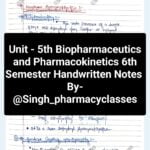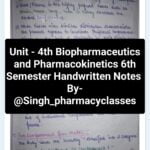1
M Pharm I Year
Dept. of Pharmaceutics
Associate Professor
Dept. of Pharmaceutics
www.DuloMix.com
2
CHALLENGES
➢ A key challenge is to objectively assess conflicting toxicological,
epidemiological data and the verification of herbal materials used.
➢ Unlike conventional cosmetics, there is extremely insufficient
documentation of herbal cosmetics. Most herbal cosmetics
depend on traditional methods or Ayurvedic formulations in their
manufacturing. Some of these are passed down through
generations, while some are documented. Even when
documented, few of these can compare to the extensive clinical,
pharmacological, and toxicological documentation available for
conventional beauty products. www.DuloMix.com
3
Contd…
➢ Herbal ingredients needs special care and precautions during the
complete phase of extraction process. Proper drying conditions
should be adhered.
➢ Improper drying may lead to unintentional adulteration. e.g. If
digitalis leaves are dried above 65ºC decomposition of glycosides
by enzymatic hydrolysis.
➢ No specific standardization : there is no single standard that will
apply to herbal cosmetic formulations, so no any good way to
decide whether ingredient can be used or not, to which extent and
what standards.
— Since the processing of one batch often differed from another, a
single company’s own product line may not have a standard output.
— This makes compliance with certain rules difficult, especially in
www.DuloMix.com
some developed markets.
4
Contd…
➢ Few ingredients: Only few ingredients of natural origin can be
used in preparation of natural cosmetics.
No synthetic surfactant
Few preservatives can only be used. So there is uncertainty in best
product preparation.
➢ The problem of formulating with less ingredients may lead to the
formation of product that may not work as well as synthetic
chemical based cosmetics. Consumers shall do some
compromises for the fact that they are using natural based
products but do not want to give up functionality for the sake of
naturalness or sustainability.
www.DuloMix.com
5
Contd…
➢ Stability problem : One of the main problem faced in
formulating herbal cosmetics preparation is the stability of
herbal component both prior and after formulation as they
degrade easily by many physiochemical process.
— Deterioration happens especially during storage, leading to the
loss of the active ingredients, production of metabolites with no
activity and in extreme cases the production of toxic metabolites.
— Physical factors such as air (oxygen), humidity, light, and
temperature can bring about deterioration directly or indirectly.
➢ Safety and efficacy assessment has to be developed on each
batch of manufacturing cycle thus the task becomes more
tedious and time consuming.
www.DuloMix.com
6
Contd…
➢ From the manufacturer points of view, raw materials in bulk
quantity and quality is hard to obtain which leads breakage in
continuous production cycle of herbal cosmetics.
— Raw materials obtained from different place with varying
climate cannot be treated as same as there arises difference
in herbal potency.
— No specific criteria is given which may lead to irregularity in
production cycle.
➢ Poor quality of raw materials: Herbal cosmetics require the
careful cultivation of plants and herbs in their natural environment.
www.DuloMix.com
7
Constrains of Herbal formulation:
A. Constrains associated with handling of medicinal plants :
➢ Indiscriminate harvesting and poor post-harvest treatment
practices.
➢ Lack of research on development of high-yielding varieties,
domestication.
➢ Poor agriculture and propagation methods.
➢ Inefficient processing techniques leading to low yield and poor
quality products.
➢ Poor quality and control procedures.
www.DuloMix.com
8
Contd…
Lack of cGMP for preparation.
Lack of R&D on product and process development.
Difficulties in marketing.
Lack of trained personnel and equipment.
Lack of facilities to fabricate equipment locally.
Lack of access to latest technological and market
information
www.DuloMix.com
9
B. Constrains associated with the dealing of Herbal Medicines:
➢ Both the raw herb and the extract contain complicated mixtures of
organic chemicals which may include fatty acids, sterols, alkaloids,
flavonoids, glycosides, saponins, tannins and terpenes as well as
other small molecules such as peptides and oligosaccharides.
— It is often difficult to determine which component, if any of the
herb has biological activity in humans.
➢ Adulteration of herbal products can be made in various ways;
commonly, adulteration is made by substituting other easily
available or cheap plant species or sometimes by spiking of a
product with synthetic constituents.
www.DuloMix.com
10
➢ In addition, the processing of herbs, such as heating or boiling,
may alter the dissolution rate, or even the functional activity of the
organic constituents. Similarly, a host of environmental factors,
including soil, altitude, seasonal variation in temperature,
atmospheric humidity, length of daylight, rainfall pattern, shade,
dew, and frost conditions, may affect the levels of components in
any given batch of an herb.
➢ Other factors, including insects, planting density, competition with
other plant species, seeding time, and genetic factors, play an
important role.
➢ Plant collection for the use in botanicals is one of the factors of
concern for quality. Plants collected in the wild may include non-
targeted species, especially either by accidental substitution or
intentional adulteration.
www.DuloMix.com
11
Factors affecting quality & purity of
Herbal drugs:
1. Drug adulteration
Adulteration may be defined as mixing or substituting the
original drug material with other spurious, inferior,
defective, spoiled, useless other parts of same or different
plant or harmful substances or drug which do not confirm
with the official standards.
www.DuloMix.com
12
Adulteration may takes place by two ways:
❖ Direct or intentional adulteration
❖ Indirect or unintentional adulteration
Examples for Adulteration:
A. With artificially manufactured materials, e.g. nutmeg is
adulterated with basswood prepared to the required shape
and size, the colored paraffin wax is used in place of
beeswax.
www.DuloMix.com
13
B. With inferior quality materials, e.g. Belladonna leaves are
substituted with Ailanthus leaves, papaya seeds to
adulterate Piper nigrum.
C. With harmful substances/ drugs, e.g. Pieces of
amber colored glass in colophony, limestone in asafoetida,
lead shot in opium, white oil in coconut oil, cocoa butter
with stearin or paraffin.
D. Adulteration of powders, e.g. powder liquorice or
gentian admixed with powder olive stones, under the
name of cinchona.
www.DuloMix.com
14
2. Faulty collection
3. Imperfect preparation
• Non removal of associated structures e.g. stems are
collected with leaves, flowers, fruits.
• Non-removal of undesirable parts or structures e.g. cork
should be removed from ginger rhizome.
• Proper drying conditions should be adhered.
www.DuloMix.com
15
The Opportunities in Herbal Cosmeceuticals:
❖Medicinal plants cultivation.
❖Medicinal plants Exports.
❖ In Drug Manufacturing Companies.
❖ Clinical and Research opportunities- The therapeutic
potential of many herbs is yet to be fully discovered.
www.DuloMix.com
16
The methods to overcome challenges in
Herbal Cosmetics:
❖Management within ranges of risk
❖ Communication of uncertainty
❖ Toxicological, and clinical documentation
❖ Pharmacovigilance
❖ Evaluating interactions
❖ Constraints with clinical trials and people available
❖ Standardization
www.DuloMix.com
❖ Safety, and efficacy assessment
17
www.DuloMix.com
18
THANK YOU
www.DuloMix.com










